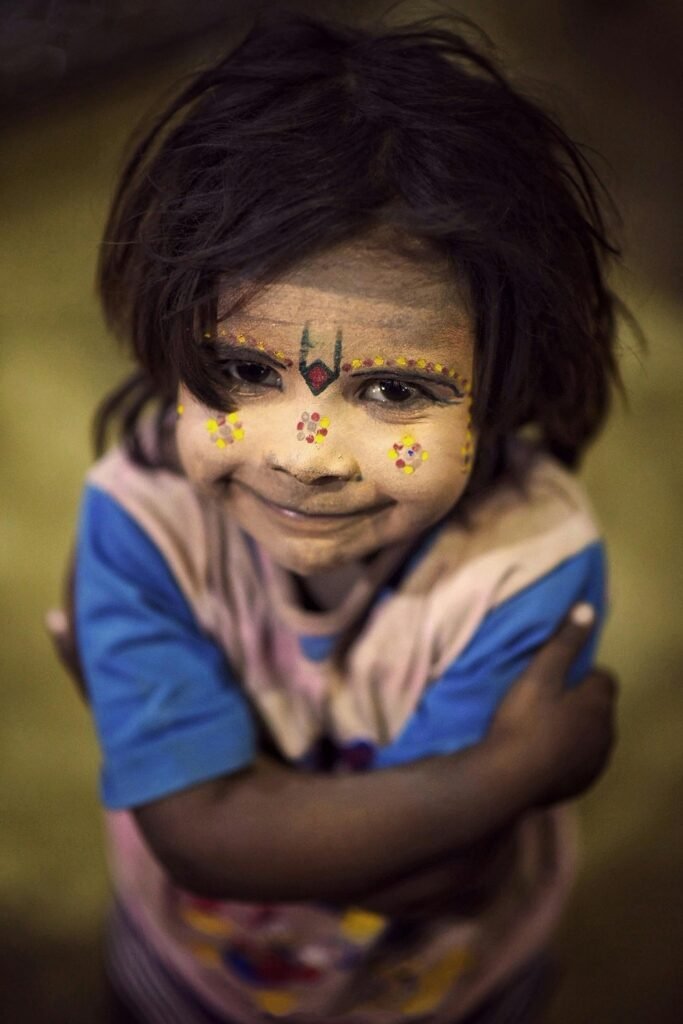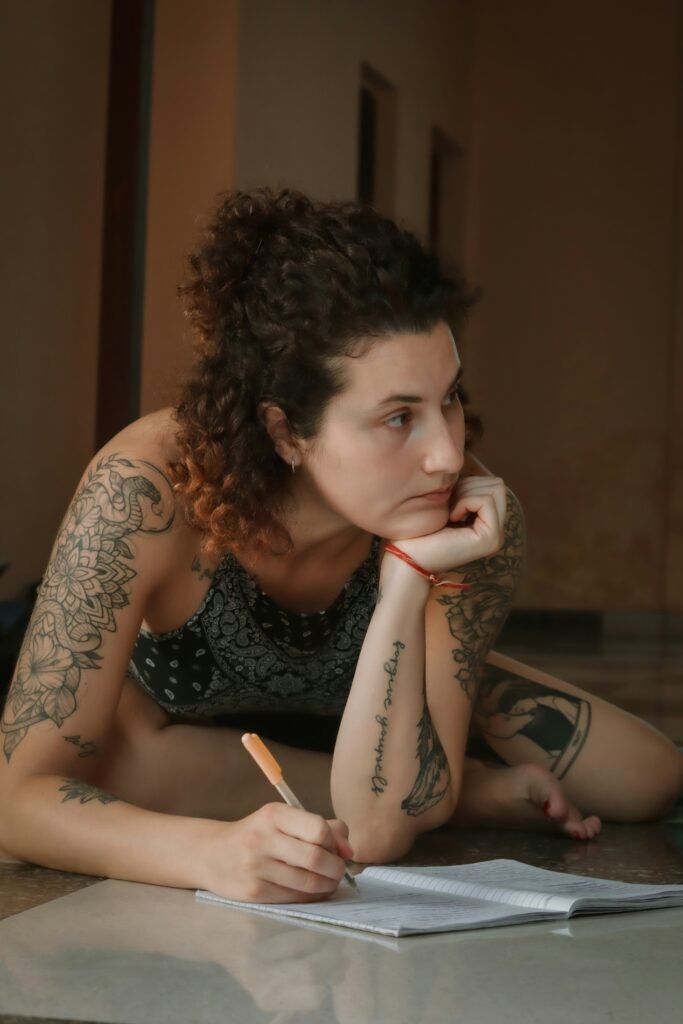Imagine three friends arriving at a seaside festival. The first sits at a kiosk where an artist sprays intricate swirls across her arm using water-based body paint. It glistens; perfect for selfies. By night the edges are already smudging. Tomorrow morning—gone.
The second friend goes to a Mehendi (henna) corner. The paste is applied in quiet, deliberate movements; cones whisper across skin. She must let it dry, must not rush. The stain blooms deeper over twelve hours. For nearly a week it will tell a fascinating story. Then it, too, will fade—sepia to amber to memory.
The third rolls up a sleeve and walks into a tattoo studio that glows with sterilized steel and buzzing needles. A design chosen after weeks, maybe months, will be negotiated with the body—not on the flaking surface, but in the layer that stays. Slight pain; disciplined stillness; a healing ritual; and a mark that becomes part of every handshake, every mirror glance, every decade ahead.
Beneath the Surface: Why Some Marks Stay

These are three temporalities of expression:
Ephemeral flash (body paint) – excitement, event.
Medium lingering (Mehendi) – a season, a phase.
Enduring inscription (tattoo) – identity, narrative, reputation.
So it is with skills, commitments, and ambitions.
Think first of water-based body painting: bright, cinematic, photogenic, and by morning a tinted memory on a towel.

Then Mehendi (henna): stains more deeply, demands drying patience, darkens overnight, lives for some days, then recedes.

Finally the tattoo: ink delivered below the vanishing zone, fused into the living tapestry of the dermis, persisting long after.

Learning works similarly: superficial curiosity sits in the “epidermis” of your mind; it exfoliates with the next distraction cycle. A practice routine with reflective feedback begins to anchor in your “dermis.” A lived identity—“I am a pianist,” “I am a data scientist,” “I am a compassionate leader”—that penetrates values, habits, social circles, and self-story? That’s ink in the deeper connective tissue of personality.
My Own Journey: Lessons from Guitar, Football, and C++
Like many of you, I’ve jumped into coding C++ randomly, joined football groups, and even began learning guitar. For a while, I stayed up to midnight coding or practicing chords. But slowly, other commitments edged in. Those passions faded into memories.
The common pattern:
Initial infatuation ⇒ peak excitement
Time pressure & routine encroach
Activity gets postponed, then dropped entirely
We move on—leaving only traces
That’s why your guitar calluses softened; your C++ syntax reflex slowed; your football fitness receded. The paint wore off. Yet—if we look closely—each left micro-scars of learning: a slightly better pattern recognition, a faint residual muscle memory, a story you can still tell. Like a leaf that fell but left its imprint textured in the bark.
So no, the time was not wasted. But it was shallow, relative to potential depth.
CELEBRITY SKIN, SIGNATURE SKILLS
Celebrity tattoos persist not because ink is magic, but because identity coherently repeats. Repetition fused with meaning becomes permanence.
Ask yourself: What do people “see” on you before you speak? Is there a demonstrable craft aura, or only fashionable noise?

Consider David Beckham. Tattoos trace his family devotion, spiritual motifs, loyalty. You don’t “ask” him whether family matters; his skin pre-answers the question. In skill terms, free kicks became his dermal identity; long after speed waned, that precision curve tattooed itself into football memory.
A tattoo silently broadcasts preferences: a compass, a mantra script, a portrait. Similarly, when someone introduces you with “She’s the go-to performance optimizer,” or “He’s the storyteller who makes data human,” you have a professional tattoo.

The Rock (Dwayne Johnson) wears a complex Polynesian pattern representing ancestry, struggle, protection. His public persona—relentless work ethic, charisma, resilience—mirrors the tattoo: a layer no marketing pivot can erase.
The Ritual of Depth
A real tattoo demands design patience, mentor trust, environmental preparation, tolerance of discomfort, and disciplined aftercare. Skill depth follows an almost identical rite. If you skip design (your “why”), you inscribe impulsively. If you skip guidance, you lock in flawed lines. If you avoid discomfort, the ink never reaches the dermis. If you neglect aftercare—reflection, rest, teaching—the edges blur. Teaching, especially, is moisturizing the lines: every explanation re-asserts structure in your neural pattern so fading slows. Depth feels less like fireworks, more like slow, luminous sediment settling until clarity appears.
(Visual cue: macro shot of a tattoo needle depositing ink; parallel inset of someone practicing a craft in focused silence.)
MAPPING YOUR OWN BODY PAINT / MEHENDI / TATTOO SKILLS
Set aside an uninterrupted hour. Write three columns by hand
(kinesthetic encoding deepens commitment).
First: Body Paint Skills – things you flirted with: three-week obsessions, weekend dabbling, hype-wave experiments.
Second: Mehendi Skills – those you practiced for months, delivered some value, but didn’t anchor into core identity.
Third: Tattoo Skills (or Candidates) – either already deep or those you now declare worthy of lifelong ink.
The Invitation: Deep Like Tattoo
The decade ahead will pass whether or not you decide what to inscribe. You can collect a scrapbook of fading paints and seasonal stains—or you can design the mark you intend to inhabit and begin the ritual now. The world will keep rewarding novelty; algorithms will keep serving fresh colors. But authority, trust, and compounding opportunity accrue to those whose craft survives social weather changes. Look at your metaphorical skin: which areas are still blank space waiting for something worthy? Decide. Sit. Endure. Heal. Return. Let the practice needle do its quiet work until people “read” your skill before you explain it.
(Visual cue: dusk desk scene—a hand resting over a signed commitment card; a subtle existing tattoo visible near the wrist.)
Deep like tattoo—not loud today, but legible a lifetime.
If you create your three-column page, you’re welcome to share it (or keep it sacred). Reach out: vishwajeet.org | om@vishwajeet.org
— Dr. Vishwajeet Vinayak Gaike
Founder
VISHWAJEET.ORG
![]()

